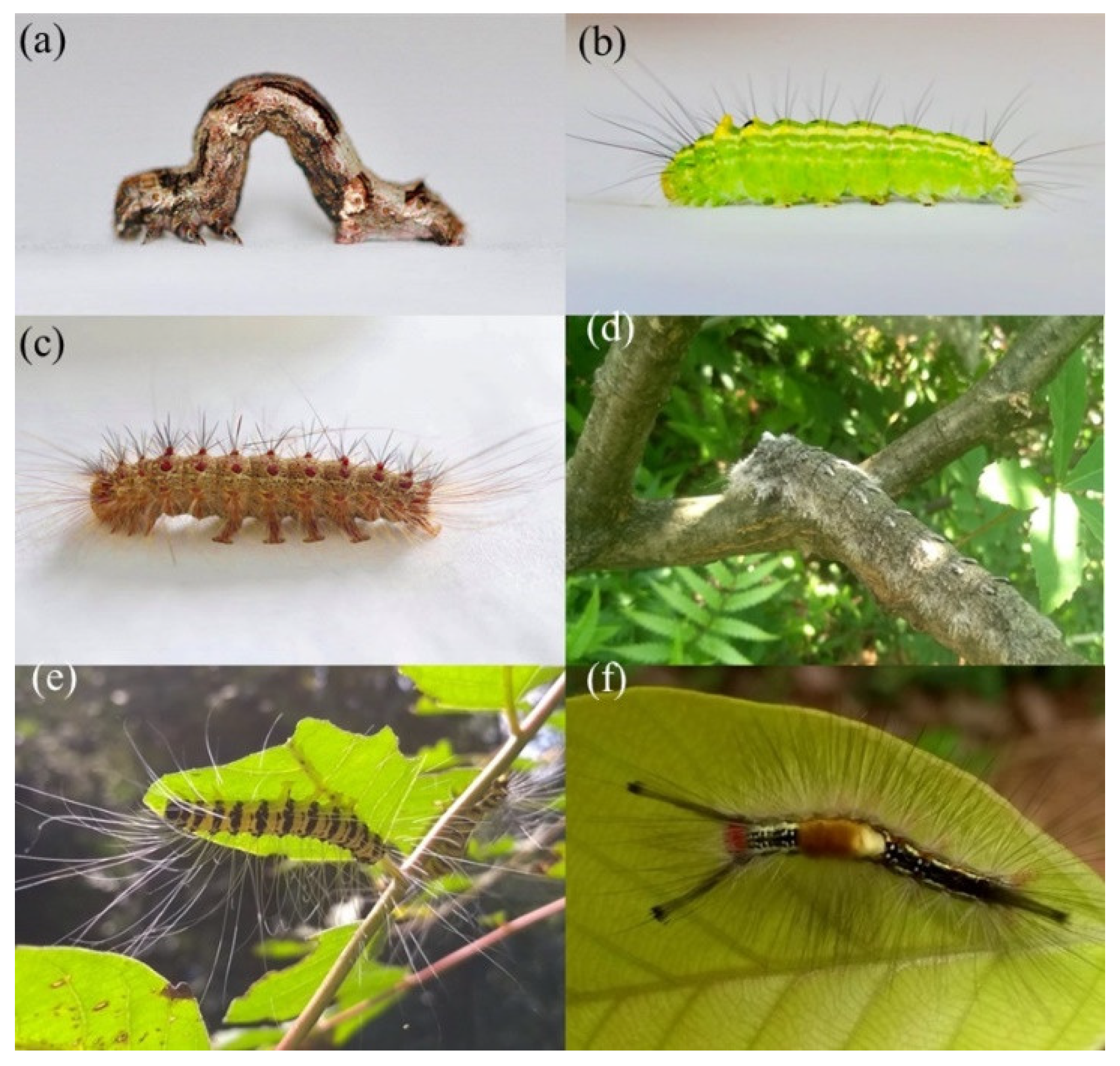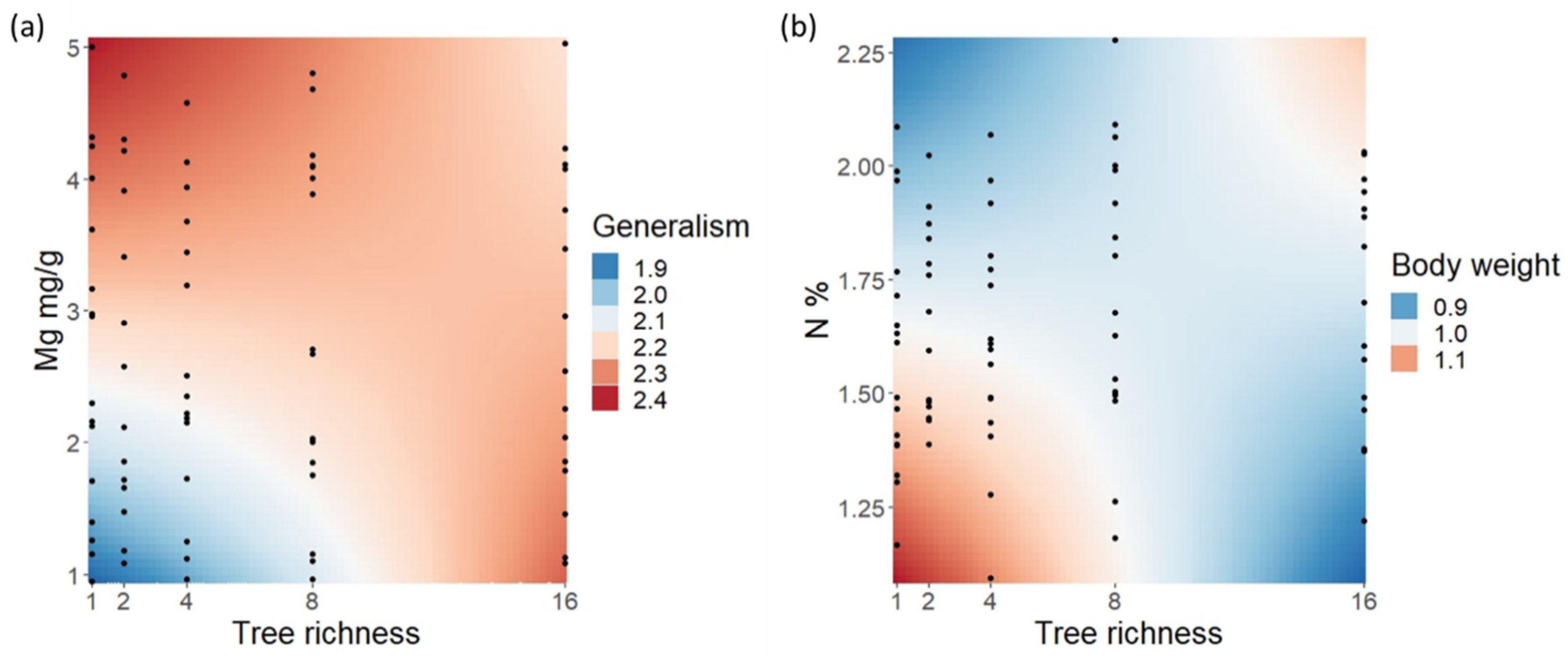The nutritional content of food plants can, to a large extent, determine the physical attributes of herbivorous insects, from growth rates to the need for defenses against predators. In forests, tree species richness may influence these plant-mediated effects through increasing variation in the nutritional quality that herbivorous insects encounter. Seasonal progression can also shape the plant–herbivore relationship, with lowered leaf quality in later seasons. It is expected that specialist herbivores fare better than generalists in poorer nutritional-quality host plants, whereas generalists can benefit from dietary mixing in more variable neighborhoods. However, a clear understanding of how these factors interact to influence the diversity and functionality across multiple traits of herbivorous insect communities is lacking.
In this study, we found support for the expectation of higher generalism of caterpillars in high-nutrition content trees, which also promoted higher abundance but lowered caterpillar species richness and smaller and less defended individuals. Increasing tree richness led to higher caterpillar species sharing between tree species, decreased trait variation, and increased caterpillar species richness per tree species. Our findings shed light on how leaf traits and changes in tree richness interact to influence the trait composition of key herbivores through fine-scale habitat partitioning in host plant neighborhoods.

Figure 1 Hair coverage and coloration categories employed in this study, presented by example species encountered in BEF-China.

Figure 2 Relationships between leaf traits (leaf C and Mg content) with caterpillar (a) abundance and traits, (b) body weight, (c) head capsule width, (d) relative head capsule width, (e,f) aposematism, (g) generalism, and (h) FDis.

Figure 3 Relationship of caterpillar traits to interaction of leaf traits and tree richness. Color gradient represents estimated change in response values in the lme models retrieved by package 'effects', and point clouds show observed values.
Literature:
Perttu Anttonen*#, Yi Li#, Douglas Chesters, Andréa Davrinche, Sylvia Haider, Helge Bruelheide, Jing-Ting Chen, Ming-Qiang Wang, Ke-Ping Ma, Chao-Dong Zhu, Andreas Schuldt. 2022. Leaf nutritional content, tree richness, and season shape the caterpillar functional trait composition hosted by trees. Insects. 13(12): 1100. https://doi.org/10.3390/insects13121100.

